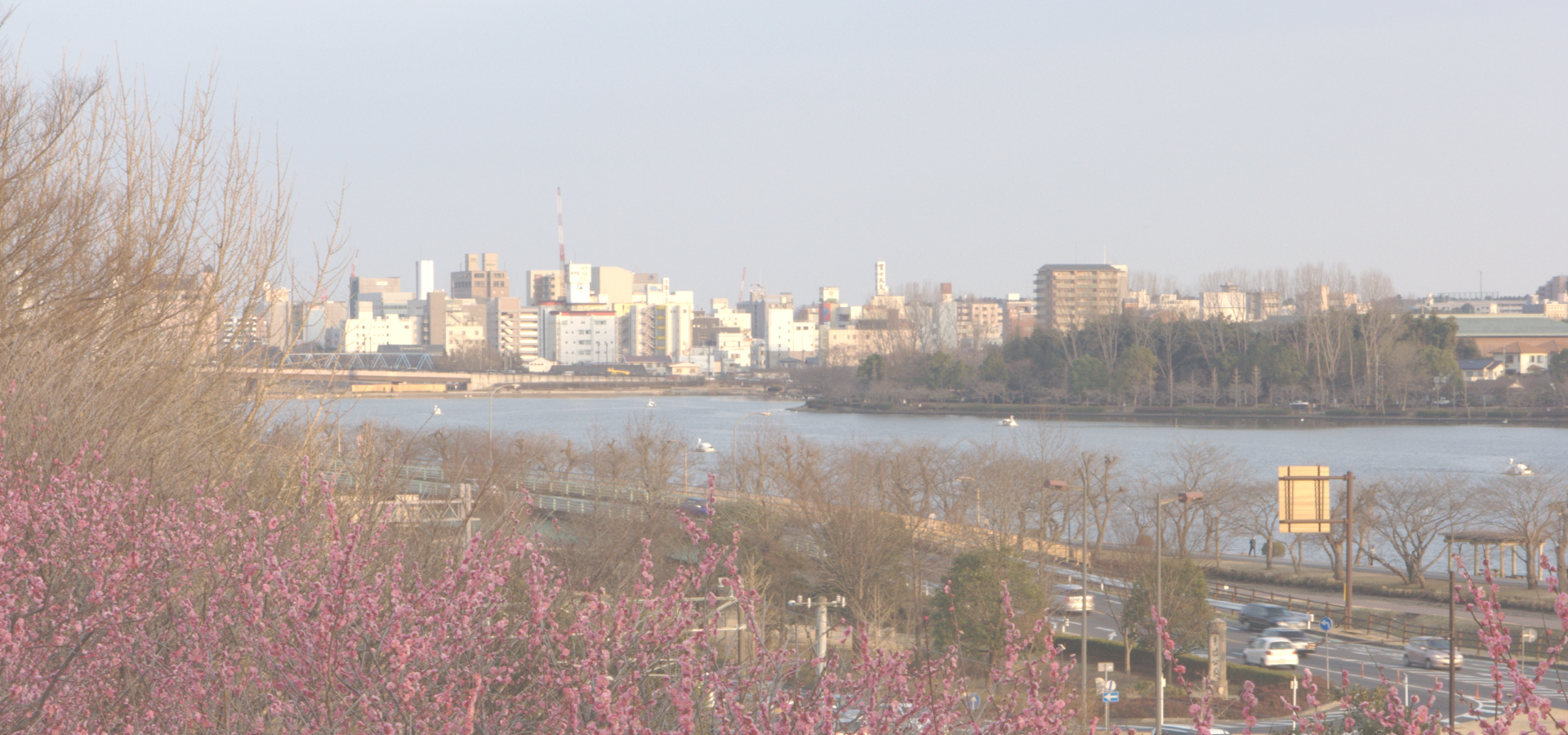Tsuchiura, Ibaraki Prefecture, Kantō Region, Japan
🇯🇵 Tsuchiura is a city located in Ibaraki Prefecture, Japan. As of 1 October 2020, the city had an estimated population density of 1,123 persons per squate kilometre. The proportion of the population aged over 65 was 29.7%. The total area of the city is 122.89 square km (47.45 sq mi). About 3,000 residents are non-Japanese, a large proportion of these being Filipinos, Chinese or Brazilians.
Geography Located in south-western Ibaraki Prefecture, Tsuchiura is situated along the western shore of Lake Kasumigaura, the second largest lake in Japan. Tokyo lies about 60 km to the south, and Tsukuba science city borders Tsuchiura to the west.
Surrounding municipalities Ibaraki Prefecture • Ushiku • Tsukuba • Kasumigaura • Ishioka • Ami.
History Human settlement in the Tsuchiura area dates to the Japanese Paleolithic period. Hunter-gatherers inhabited the coastal area of the Pacific Ocean (now Lake Kasumigaura) forming large shell middens, examples of which can be seen at the Kamitakatsu archeological site. Locals began wet-rice cultivation, and development of iron and bronze technology, during the Yayoi period. In the Kofun period numerous Burial mounds were constructed in the area.
8th century to 19th century During the Nara period the area was organized under the Taihō Code with what is now Tsuchiura occupying four districts of Hitachi Province. In 939, during the Heian period, Taira no Masakado led an uprising against the central government by attacking the provincial capital at Ishioka, a few km to the north of Tsuchiura.
During the Kamakura period and the Sengoku period, the area was dominated by several samurai clans. During the Edo period, part of what is now Tsuchiura was administered as a castle town by Tsuchiura Domain, one of the feudal domains under the Tokugawa shogunate. The area prospered due to its position on the Mito Kaidō, a highway connecting Edo with Mito, and on a canal connecting Lake Kasumigaura to Edo Bay.
Modern period With the creation of modern municipalities after the Meiji Restoration on April 1, 1889, the town of Tsuchiura was established within Ibaraki Prefecture. In 1895 railroad service was started in Tsuchiura. The Gothic Revival architecture of the old junior high school from this period can be seen at the Dai'ichi high school.
Tsuchiura was elevated to city status when the towns of Manabe and Tsuchiura were merged on November 3, 1940. During World War II the city suffered damage in an air raid on June 10, 1945.
On September 1, 1951, Tsuchiura absorbed parts of the village of Asahi on the shore of Arakawa and also absorbed the village of Towa. The city absorbed the village of Kamiotsu on November 1, 1954. On February 20, 2006, the village of Niihari (from Niihari District) was merged into Tsuchiura.
Government The city is managed by the mayor's office and the city council under the mayor-council government system. The mayor is elected through a citywide election and the members of the city council are elected from districts within the city. The mayor's office is made up of the Mayor, and two Vice Mayors. The 28-member city council is headed by a Chairperson. Tsuchiura's political system is similar to that of other cities in Japan, as the Local Autonomy Law makes all municipalities uniform in powers and organization.
Tsuchiura sends three members to the Ibaraki Prefectural Assembly.
Tsuchiura is part of Ibaraki 6th district for elections to the lower house of the Diet of Japan.
Economy Tsuchiura was formerly the centre of commerce in southern Ibaraki Prefecture due to its good rail connections and location on Lake Kasumigaura. It was also the location of a major base of the Imperial Japanese Navy Air Corps both before and during the war. In the postwar era, the development of the Japanese national highway system, selection of neighboring Tsukuba as a centre for government investment and development, and increasing suburbanization has resulted in the closure of many department stores and commercial facilities in the centre of the city. The city has several industrial parks. Present land usage is over 30% agricultural, with lotus root as a famous local crop.
Education • Tsukuba International University • Tsuchiura has 16 public elementary schools and seven public middle schools operated by the city government, and five public high school operated by the Ibaraki Prefectural Board of Education. There are also one private elementary school, one combined middle/high school and three private high schools. The prefecture also operates one special education school for the handicapped.
Transport: Rail JR East – Jōban Line • Arakawaoki - Tsuchiura - Kandatsu
Transport: Road • Jōban Expressway – Sakura-Tsuchiura Interchange, Tsuchiura-Kita Interchange • National Route 6 • National Route 125 • National Route 354.
Local attractions • site of Tsuchiura Castle • Tsuchiura National Fireworks Competition.
Asia/Tokyo/Ibaraki

Tsuchiura has a population of over 138,033 people. Tsuchiura also forms part of the wider Ibaraki Prefecture which has a population of over 2,871,199 people.
To set up a UBI Lab for Tsuchiura see: https://www.ubilabnetwork.org Twitter: https://twitter.com/UBILabNetwork
Twin Towns, Sister Cities Tsuchiura has links with:
🇩🇪 Friedrichshafen, Germany 🇺🇸 Palo Alto, USA🇺🇸 Greensboro 36.074
🇺🇸 Porterville 36.073
🇩🇿 Bordj Bou Arréridj 36.067
🇺🇸 Broken Arrow 36.053
🇯🇵 Nihonmatsu 140.417
Locations Near: Tsuchiura 140.202,36.0799
🇯🇵 Tskuba 140.08,36.035 d: 12.1
🇯🇵 Ushiku 140.133,35.967 d: 14
🇯🇵 Tsukuba 140.067,36.083 d: 12.1
🇯🇵 Toride City 140.05,35.9 d: 24.2
🇯🇵 Inzai 140.15,35.833 d: 27.8
🇯🇵 Ibaraki 140.392,36.307 d: 30.5
🇯🇵 Kashiwa 139.967,35.867 d: 31.8
Antipodal to: Tsuchiura -39.798,-36.08
🇨🇱 La Reina -33.45,-33.45 d: 19365.9
🇧🇷 Tubarão -49,-28.467 d: 18805.9
🇧🇷 Criciúma -49.372,-28.678 d: 18797.4
🇧🇷 São José -48.617,-27.6 d: 18758.1
🇧🇷 Palhoça -48.667,-27.633 d: 18757.9
🇧🇷 Biguaçu -48.667,-27.5 d: 18746.4
🇧🇷 Itapema -48.612,-27.091 d: 18714.1
🇧🇷 Balneário Camboriú -48.633,-26.983 d: 18703.3